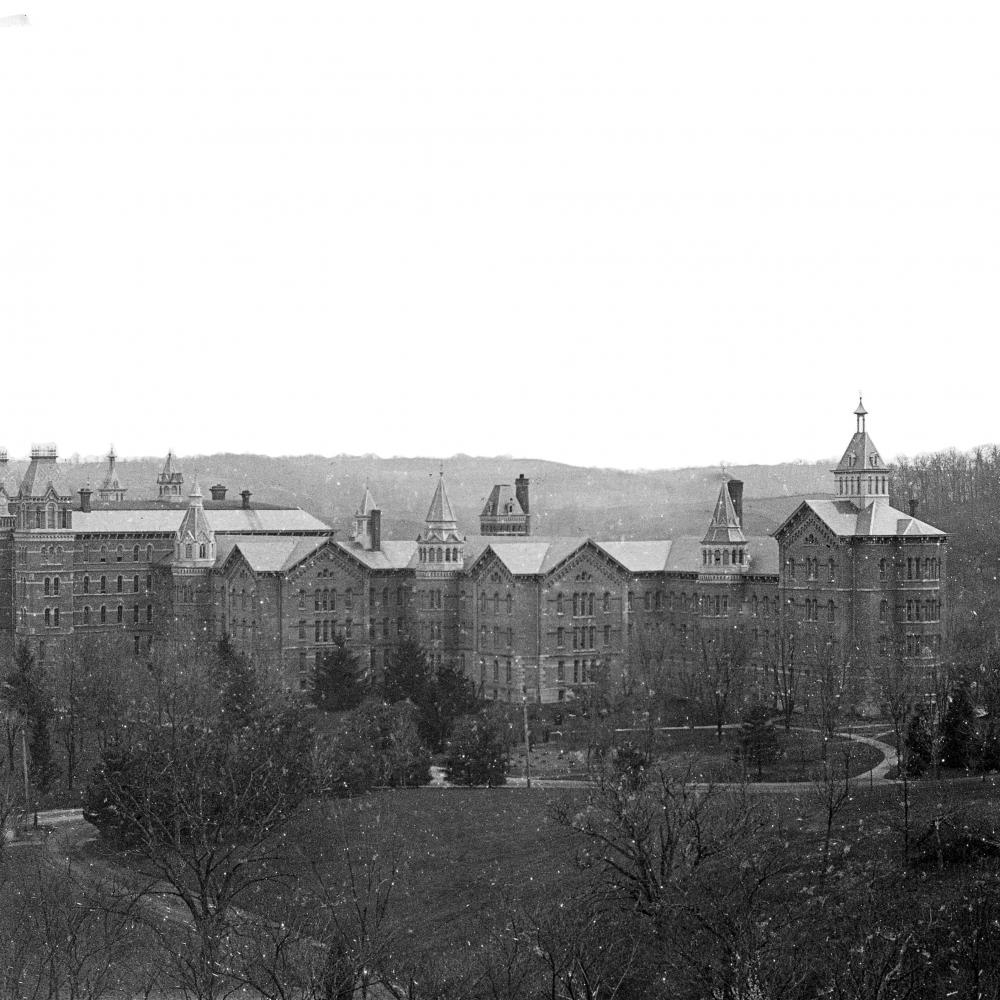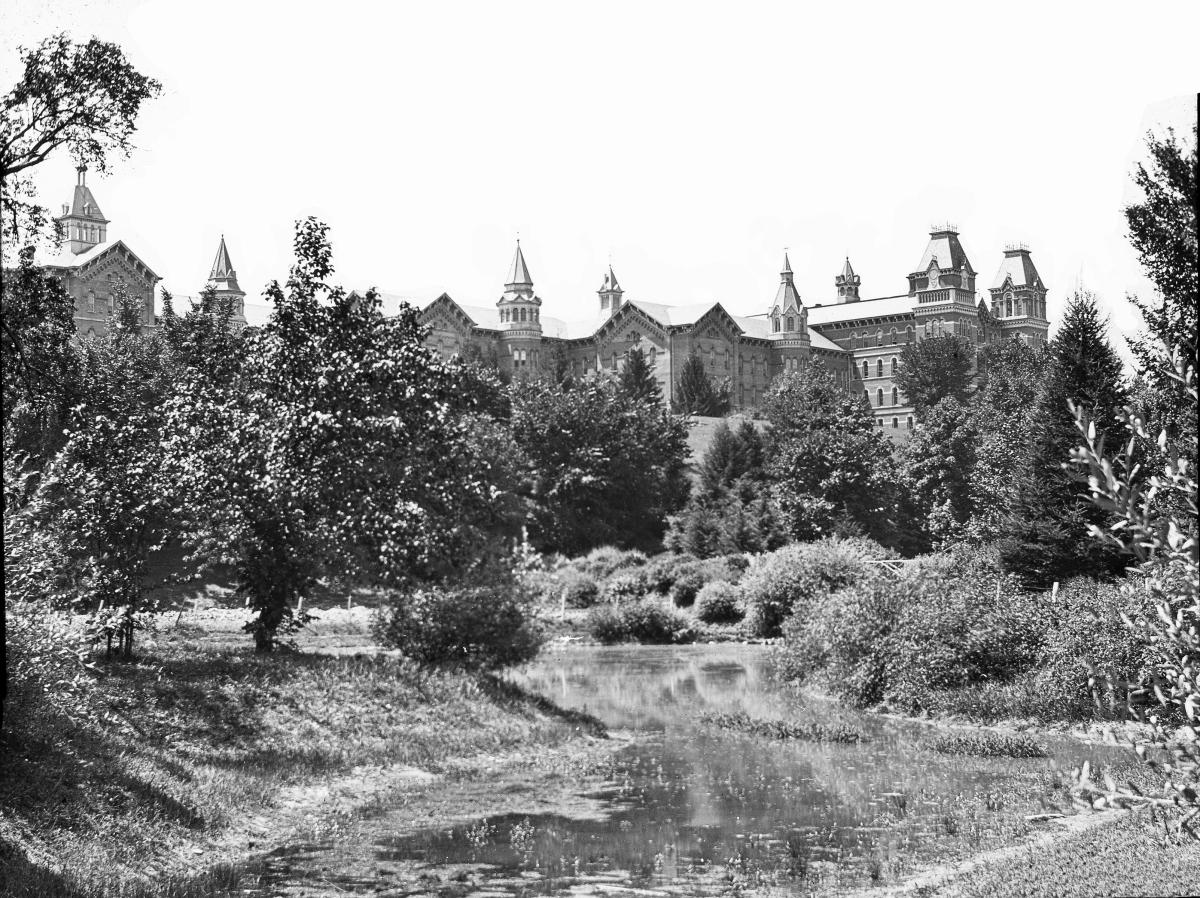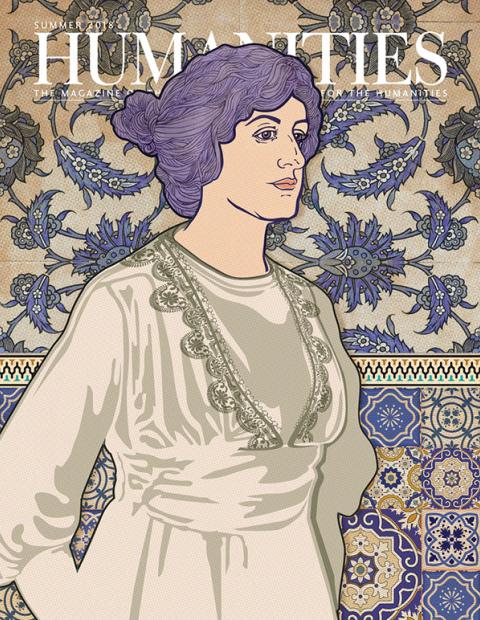It has the most dramatic vista in Athens: a Victorian-era, Gothic Revival building that once served as a mental hospital, made of red brick and overlooking the Hocking River Valley, with rolling grounds gorgeous enough for teenagers to stage their prom photos and architecture ominous enough to star in B-movie horror flicks.
The building and its history, says Patricia N. Williamsen, executive director of Ohio Humanities, “are very much a part of the physical and psychic landscape.” The most arresting and remembered work by Cleveland architect Levi Scofield, the edifice looms high and heavy over this town of twenty-four thousand near the West Virginia border.
In March, the Southeast Ohio History Center opened an exhibit to commemorate the one-hundred-fiftieth anniversary of the hospital’s dedication. The exhibit runs through the end of the year.
The property has been known for generations as the Athens Lunatic Asylum. Construction began in 1867 and the building, though unfinished, was dedicated the following year. A somewhat infamous landmark, given the general misunderstanding of mental illness, decades of questionable patient treatment, and frequent overcrowding, the asylum once represented the gold standard of treatment.
“A wave of asylums [were] built in America in the nineteenth century,” says Katherine Ziff, an Ohio University adjunct professor who published in 2012 Asylum on the Hill: History of a Healing Landscape, upon which the exhibit is based.
The first public institution for the mentally ill in America opened in Williamsburg, Virginia, in the 1770s, and Ziff notes that the grand asylums (which, like the one in Athens, included ballrooms and amusement parlors) replaced “poor houses, jails, private asylums” and many smaller mental hospitals across the nation. The asylum era was also the first time nurses and attendants were trained specifically in the treatment of mental illness.
Encompassing one thousand acres, the Athens bluff also holds the hospital cemetery and is surrounded by former farmland, worked by the men and women who were committed there, as many as eighteen hundred in the 1950s.
Now known as the Ridges, the asylum is home to the Kennedy Museum of Art of Ohio University. The museum took over much of the property from the state department of mental health in 1988 and the last patients were transferred to a new, nearby facility in 1993.
In small anterooms at the art museum’s entrance are vintage photographs from the building’s asylum days and some text, including a quote from Charles Gall, a long-ago foreman on the asylum farm who rued the day that drugs like Thorazine began to replace farm work in the 1950s. “The farm provided therapy for patients to help them forget their problems,” he said.
“One of the tenets of ‘moral treatment’ [for the mentally ill] was the role of the landscape—beautiful views of nature were seen to be curative, as well as taking outdoor exercise,” says Ziff.
Contemporary approaches to nature-based therapy—healing gardens and ecotherapy, for example—have emerged in treatment, says Ziff, who is also a mental health clinician and the director of the project commemorating the asylum’s anniversary.
Activity once described as “meaningful occupation” in the “moral treatment” model promoted by mental health advocate Thomas Story Kirkbride (1809–1883)—lots of sun and air, kitchen work, milking cows, picking fruit, mending shirts—was considered key in “training the mind” all the way up to the middle of the twentieth century. The practice ended when a federal court ruled in 1973 that patient labor had to be compensated with minimum wages and overtime. By the 1980s, the process of deinstitutionalizing the mentally ill gained momentum, and state hospitals, such as Athens, began to close.
The project commemorating the sesquicentennial encompasses all phases of treatment at the asylum. It was funded in part by Ohio Humanities and installed earlier this year at the Southeast Ohio History Center, headquartered in the World War I-era First Christian Church of Athens, about two miles from the Ridges.
The exhibit—which carries the same title as Ziff’s book—includes asylum artifacts along with oral histories from doctors, employees, former patients, and their families. One of the more intriguing items in the exhibit is a violin made from scratch in 1930 by a patient identified only as “John.” It is on display with a lobotomy pick—once used in surgery to subdue as many as 20 patients in a single day—and an early electroshock therapy machine.
An aspect that Ziff and her colleagues do not dwell on is the enthusiasm for the paranormal that draws some visitors to the imposing building. The subject inevitably arose, however, at public talks organized around the exhibit.
“Oh, the spooky stuff—it does bother me,” says Ziff, noting that the thrill of being frightened in such places comes at the cost of misery once suffered there. In 2000, she says, a TV program filmed at the asylum and its woefully neglected burial grounds named the Ridges one of the “world’s scariest places.”
In response, the local chapter of the National Alliance on Mental Illness cleaned up the three graveyards on the property, set aright the tombstones, and endeavored to demystify the image of a psychiatric hospital as the final resting place for its former patients. Easier said than done, especially with so many raucous fraternity houses nearby, local Halloween celebrations that attract thousands, and all manner of dares and double-dares that go on.
In 2016, Ohio author Mindy McGinnis won an Edgar Award for her young adult historical thriller A Madness So Discreet, which is set at the asylum. She had never been to the Athens hospital when she conceived the novel, but had heard about it through books and television as a haunted place, which she then visited.
“It provided a meeting point for many of my interests,” says McGinnis. “The history of mental illness, women’s rights, the evolution of medical treatments, and old architecture.”
Grace Savage works a reception desk for visitors to the Kennedy Museum. “People are always asking me how many ghosts I’ve seen,” says Savage, a sociology major at Ohio University.
Answer: none.



